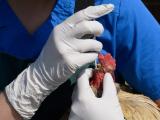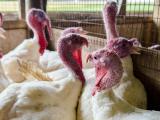In the last 3 weeks of April, the pace of highly pathogenic avian flu outbreaks declined slightly, but, with the first detection in Gambia, the virus continues to spread to new areas, the World Organization for Animal Health (WOAH) said in its latest global update.
In US developments, the US Department of Agriculture (USDA) in its most recent updates reported another outbreak in poultry, more H5N1 detections in wild birds, and more H5N1 identifications in mammals.
WOAH urges biosecurity precautions
In the latest surveillance period, countries reported 48 outbreaks in poultry and 33 events involving wild birds, mainly in Europe, but also in Asia and the Americas. About 1.5 million birds died or were culled over the past 3 weeks, WOAH said.
Seasonal patterns suggest that activity may have passed its peak, given a slight decrease in activity from previous periods. An outbreak in Gambia that began on March 25 is notable and shows that the virus is spreading to new areas, according to the report. A full report on the outbreak from WOAH said tests have confirmed the H5N1 strain. The outbreak occurred near the Atlantic coastal city of Tanji in western Gambia, killing more than 400 terns and gulls.
Elsewhere, Germany reported a new H5N1 event in poultry, and new outbreaks were reported in ongoing events in Argentina (H5), Canada, the United States, Japan, South Korea, Hungary, and Italy.
New detections in wild birds, were reported in Lithuania, and new outbreaks involving ongoing events were reported in Argentina (H5), Uruguay (H5), and Belgium (untyped). Also, H5N1 detections were reported in the United States and eight European countries.
WOAH urged countries to maintain their biosecurity practices and report outbreaks in a timely manner. It also emphasized the importance of reporting avian flu in unusual hosts because of increasing detections in mammals—a situation that requires close monitoring.
More avian flu in US birds and mammals
Over the past few days, the USDA's Animal and Plant Health Inspection Service (APHIS) reported one more outbreak in a poultry flock, which involved backyard birds in Colorado's Routt County.
Separately, APHIS reported 22 more H5N1 detections in wild birds, pushing the total since January 2022 to 6,737. The birds were from a range of states and included both waterfowl and raptors, including five more endangered condors in Arizona.
Also, APHIS reported six more H5N1 detections in mammals, bringing the total to 176. The new reports included three red foxes and a possum in New York, plus a skunk and mountain lion in Montana.



















